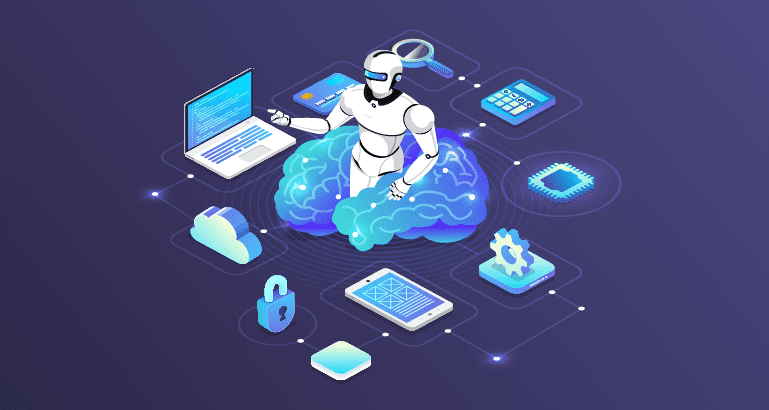Generative AI: A Comprehensive Guide for Businesses in 2024
Introduction
The rise of Artificial Intelligence (AI) has profoundly impacted how businesses function and handle their daily operations. The introduction of various AI applications and tools has empowered enterprises to make smarter decisions and automate repetitive tasks, enhancing efficiency and effectiveness. Among the many types of AI algorithms available, generative AI has gained significant traction across industries.
Thanks to the increasing popularity of notable generative AI tools like Midjourney and ChatGPT, businesses can now generate fresh ideas, content, and solutions at a much faster pace than ever before. This advancement improves decision-making processes, streamlines operations, and enables businesses to maintain their competitiveness in a rapidly changing market by developing novel products and services. The potential of generative AI is widely acknowledged in 2023, and it is seen as a transformative force in the business world.
Generative AI: Explained
Generative AI, also known as generative artificial intelligence, refers to a field within Artificial Intelligence (AI) that focuses on creating models and algorithms capable of generating new and original content. It involves using machine learning techniques, particularly generative models, to produce outputs such as images, text, music, videos, or other forms of data.
Generative AI models are trained on large datasets and learn to identify patterns, structures, and correlations within the data. They then use this learned knowledge to generate new content that exhibits similar characteristics to the training data. This process involves the model generating outputs that are not explicitly present in the training set but are produced based on the patterns and statistical relationships it has learned.
Generative AI has applications in various fields, including art, music, content creation, design, simulation, and data augmentation. It enables the generation of novel and diverse content, opening up new possibilities for creativity and innovation.
How Generative AI model function?
Generative AI models work by learning patterns and statistical relationships within a dataset and using that knowledge to generate new and original content. Here's a simplified overview of how these models typically operate:
- Data Preparation: The first step involves gathering and preparing a dataset that represents the type of content the generative AI model will generate. For instance, if the model is meant to generate images, a large collection of images will be used for training.
- Training Phase: The generative AI model is trained on the dataset. In the case of GANs, the model consists of two main components: a generator and a discriminator. The generator generates new content, while the discriminator evaluates and distinguishes between the generated content and real data from the training set.
- Generator Training: During the training process, the generator attempts to create content that the discriminator cannot distinguish from real data. The generator takes random noise or initial input and tries to transform it into an output that resembles the training data.
- Discriminator Training: Simultaneously, the discriminator is trained to become more accurate in distinguishing between the generated content and the real data. It provides feedback to the generator on how well it is performing and helps improve the quality of the generated content.
- Iterative Feedback Loop: The generator and discriminator go through multiple iterations of training, constantly improving their performance. The feedback loop between the generator and discriminator helps refine the generative AI model, making the generated content more realistic and aligned with the patterns and characteristics of the training data.
- Generating New Content: model can be used to generate new content. The generator takes random noise or input and transforms it into an output that resembles the training data. For example, a GAN can generate new images, while a language model can generate new text based on the patterns it has learned.
Generative AI use-cases
- Content Generation: Generative AI can be used to create diverse forms of content, such as images, videos, music, and text. It enables automated content creation for applications like video game design, graphic design, virtual reality, and multimedia production.
- Image Synthesis and Editing: Generative AI models can generate realistic images and also assist in image editing tasks. They can enhance image quality, modify specific features, or even generate entirely new images based on user inputs.
- Text Generation and Natural Language Processing (NLP): Generative AI models are employed in NLP tasks such as text generation, language translation, summarization, and dialogue systems. They can generate coherent and contextually relevant text, assist in content writing, or act as virtual conversational agents.
- Drug Discovery: Generative AI is being utilized in the field of pharmaceuticals to aid in the discovery and design of new drugs. Models can generate novel molecular structures that have the potential to be developed into new therapeutic compounds.
- Design and Creativity Support: Generative AI assists designers, architects, and creative professionals in generating new design concepts, product prototypes, or artistic creations. It can provide inspiration and suggest alternative design options.
- Data Augmentation: Generative AI models can generate synthetic data that resembles real data, allowing for data augmentation. This technique is particularly useful in machine learning tasks where larger datasets are required for training models.
- Simulation and Scenario Generation: Generative AI models can generate realistic simulations and scenarios for various domains, such as autonomous driving, robotics, and gaming. They can help train AI systems in virtual environments before real-world deployment.
- Personalized Recommendations: Generative AI can analyze user preferences and generate personalized recommendations for products, services, or content. This enhances user experiences in areas like e-commerce, streaming platforms, and targeted marketing.
Conclusion
Generative AI plays a vital role in automating repetitive tasks, boosting productivity, and enhancing decision-making processes across diverse industries. Its applications span sectors such as healthcare, manufacturing, real estate, finance, and entertainment.
Generative AI offers numerous use cases that enable the automation of creative tasks, such as content creation, and fulfill critical functions like predictive analysis. This AI technology has the power to revolutionize various industries, and companies that effectively harness its capabilities will be in a favorable position to increase revenue, minimize costs, and enhance overall efficiency. Get in touch with Nu10's team of skilled Generative AI experts and revolutionize your business operations with the power of Generative AI tools. Automate tasks, streamline processes and unlock new opportunities for efficiency and innovation.
About Author
Mohit Kataria
Mohit, a career entrepreneur with 21+ years of experience, specializes in conceptualizing large scale analytics initiatives and driving them to success. He co-founded Manthan Research & Analytics, later acquired by M3 and rebranded as m360 Research. He excels in building and scaling high performance teams.








